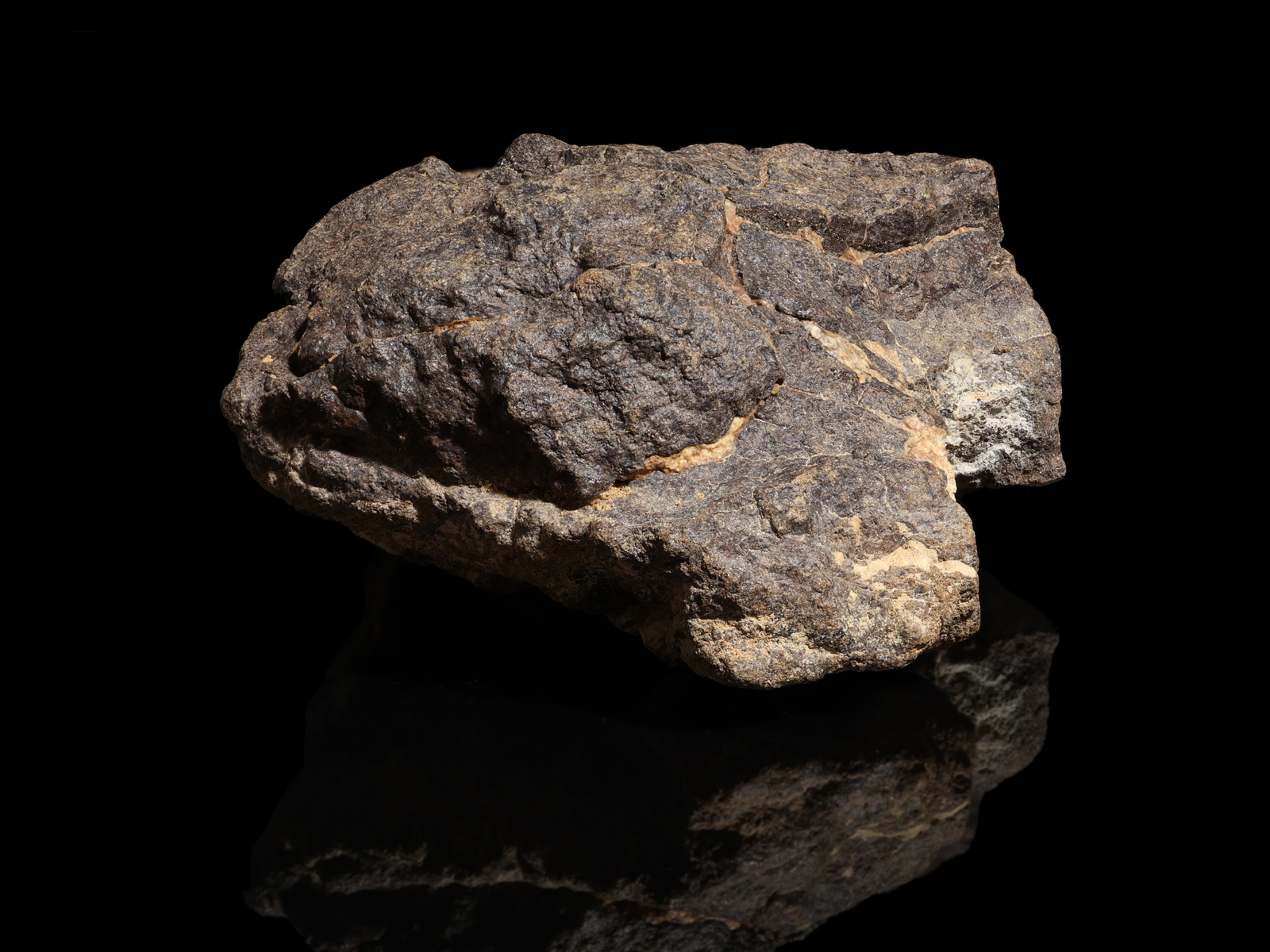The Al Haggounia 001 meteorite is a fascinating example of a fossil meteorite that was discovered in the Western Sahara. It is an enstatite chondrite, a rare type of meteorite that provides valuable information about the formation of our solar system. Its unique mineralogy and long residence on Earth make this meteorite not only scientifically interesting, but also attractive to space rock collectors.
Composition and mineralogy
Al Haggounia 001 is characterised by its very low iron content and high concentration of enstatite, a mineral composed mainly of magnesium silicate. Enstatite chondrites are special because they were formed in a very low oxygen environment, which means that their composition differs significantly from more common meteorites. This suggests that they originated from primitive planetesimals that formed in the early stages of the solar system's evolution.
Traces of Time: Weathering and Impact History
One of the distinguishing features of this meteorite is its fossil state - it has been on Earth for more than 10,000 years. During this time, it has been exposed to wind, water and other geological processes that have left traces of weathering on its surface. Despite these changes, however, the meteorite has retained its original structure and provides scientists with crucial information about the history of interplanetary bodies.
The structure of Al Haggounia 001 also reveals signs of impact melting, indicating that it has undergone extreme conditions in the past - strong impacts and intense heating. These processes could have occurred during its existence in space or during the impact on Earth itself.

Origin and journey to Earth
Like other enstatite chondrites, Al Haggounia 001 comes from planetesimals that formed in the early stages of the solar system. It is estimated to have been part of a larger body that broke apart due to collisions with other objects. After a long journey through interplanetary space, it eventually reached our planet, where it was gradually buried and preserved in the Saharan environment.
Scientific and collecting significance
Due to its rarity and unique composition, Al Haggounia 001 is extremely valuable to both scientists and meteorite collectors. It provides important information about the early stages of the formation of the solar system and the conditions that prevailed in the areas where the planetary embryos formed.
The Al Haggounia 001 meteorite is not only a fascinating example of a fossil meteorite, but also a key to understanding the processes that shaped our solar system. Whether in the hands of scientists analysing its composition or collectors fascinated by its history, this meteorite is a unique witness to the past, bringing a slice of the universe to our fingertips.
